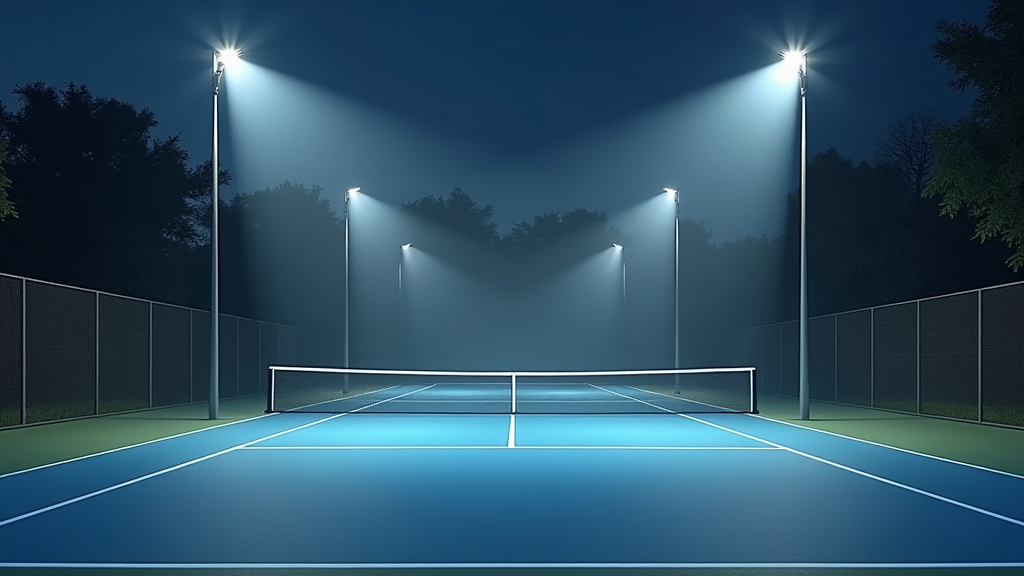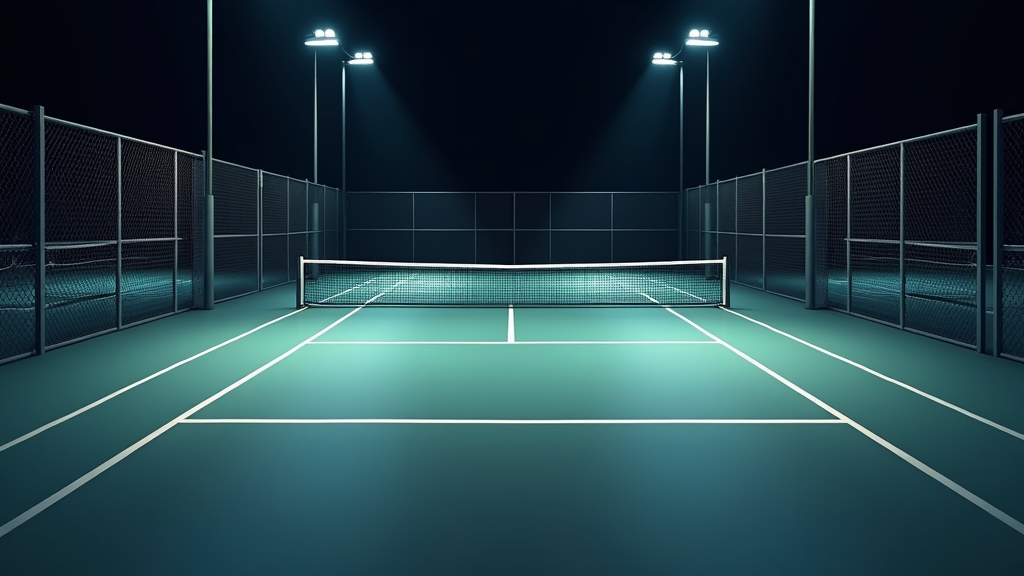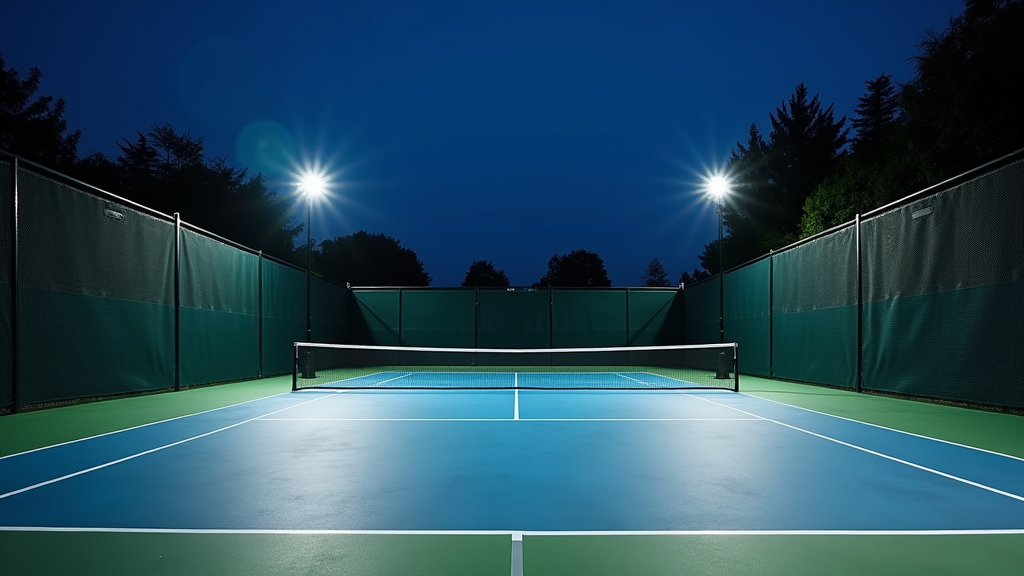Table of Contents
- Understanding the Pickleball Court Lighting Standards Outline
- Pickleball Court Lighting Standards Outline: Understanding the Basics
- Key Definitions in Pickleball Court Lighting Standards
- Core Principles of Effective Pickleball Court Lighting
- Essential Lighting Components for Pickleball Courts
- Illumination Levels and Uniformity Standards for Pickleball
- Color Temperature, CRI, and Glare Control in Lighting
- Indoor vs. Outdoor Pickleball Lighting Requirements
- Commercial vs. Residential Pickleball Court Lighting
- Dark Sky Compliance for Pickleball Court Lighting
- Detailed Pickleball Court Lighting Standards Outline
- Preparation: Materials for Pickleball Court Lighting
- Initial Setup: Planning Pickleball Court Illumination
- Key Considerations: Budget and Electrical Capacity
- Step-by-Step: Installing Pickleball Court Lighting
- Best Practices: Achieving Optimal Pickleball Lighting
- Common Mistakes: Avoiding Pickleball Lighting Problems
- Advanced Techniques: Pickleball Lighting Optimization
- Optimization: Minimizing Shadows and Glare on Courts
- Troubleshooting: Fixing Pickleball Court Light Issues
Understanding the Pickleball Court Lighting Standards Outline

Pickleball Lighting: Overview and Why It Matters
Pickleball’s meteoric rise in popularity has brought with it an increased focus on court quality, including proper lighting. As the fastest-growing sport in the US, according to the Sports & Fitness Industry Association, pickleball demands facilities that support safe and enjoyable play, especially as enthusiasts seek to extend their playing time beyond daylight hours.
Adequate lighting is crucial for reducing the risk of injuries and enhancing the overall gameplay experience. Proper illumination ensures players can accurately track the ball, anticipate movements, and react quickly. This, in turn, promotes player safety and comfort, allowing for longer and more engaging matches.
Investing in quality pickleball court lighting isn’t just about extending playing hours; it’s about creating a superior environment for players of all skill levels.
Pickleball Court Lighting: Historical Context and Evolution
Pickleball originated as a backyard pastime, where formal lighting considerations were largely absent. Games were typically played during daylight hours, and the need for specialized illumination was minimal.
However, the landscape has dramatically changed. The surge in pickleball’s popularity has fueled a demand for dedicated public and private facilities, necessitating a more professional approach to court design and construction. This includes incorporating advanced lighting systems that meet specific performance and safety standards.
Recent advancements in LED lighting technology have provided energy-efficient and cost-effective solutions for pickleball court illumination. Furthermore, formal lighting standards are now being established, particularly for competitive play, ensuring a consistent and fair experience for all participants.
Key Learning Points: Pickleball Lighting Standards Outline
This guide will delve into the core concepts of pickleball court lighting, providing a comprehensive understanding of essential metrics such as footcandles, lumens, color temperature, and Color Rendering Index (CRI). We’ll explore the critical importance of achieving uniform light distribution across the court and minimizing glare to optimize visibility and player comfort.
You’ll also gain practical knowledge on selecting appropriate lighting fixtures, determining optimal pole placement, and meeting relevant regulatory requirements, including dark sky compliance. Whether you’re designing a new pickleball facility or upgrading an existing one, this outline will equip you with the information needed to optimize lighting for different levels of play, from recreational games to competitive tournaments.
Pickleball Court Lighting Standards Outline: Understanding the Basics
Key Definitions in Pickleball Court Lighting Standards
Understanding pickleball court lighting starts with knowing key terms. Here’s a breakdown:
- Footcandle (fc):A unit measuring the amount of light on a surface.
- Lux:The metric equivalent of a footcandle (1 fc ≈ 10.76 lux).
- Lumens:The total visible light emitted by a light source.
- Color Temperature (Kelvin):Describes the light’s warmth or coolness.
- Color Rendering Index (CRI):Measures color accuracy under the light.
These definitions will help you better understand the technical aspects of lighting your pickleball court.
Core Principles of Effective Pickleball Court Lighting
Several core principles ensure effective pickleball court lighting:
- Adequate illuminance for clear visibility.
- Uniform light distribution to reduce shadows.
- Glare control to enhance player comfort and safety.
- Energy efficiency and long-lasting performance.
Adhering to these principles ensures a safe and enjoyable playing experience.
Essential Lighting Components for Pickleball Courts
Setting up pickleball court lighting involves several essential components:
- Light fixtures (LED fixtures are highly recommended for efficiency and longevity).
- Poles for securely mounting the light fixtures.
- Wiring and other necessary electrical components.
- An optional control system for dimming and scheduling.
Choosing the right components is crucial for optimal lighting performance.
Illumination Levels and Uniformity Standards for Pickleball
Illumination levels and uniformity are critical for pickleball court lighting. Key considerations include:
- Illumination Level:
- Uniformity:The maximum to minimum light ratio should ideally be 2.0 or less to ensure even lighting across the court.
- Pole Height:Poles are typically around 20 feet (approximately 6 meters) tall.
- Recreational play: Aim for around 30 footcandles (approximately 323 lux).
- Tournament play: Aim for around 50 footcandles (approximately 538 lux).
Meeting these standards enhances playability and reduces eye strain.
Color Temperature, CRI, and Glare Control in Lighting
Beyond brightness, color and glare are vital. Consider the following:
- Color Temperature:Use 4000K to 5000K for natural-looking light; avoid exceeding 5000K.
- Color Rendering Index (CRI):A CRI above 70 is recommended for accurate color perception.
- Glare Control:Utilize full cutoff fixtures to minimize upward light and glare.
Proper color and glare management improve player comfort and visual clarity.
Indoor vs. Outdoor Pickleball Lighting Requirements
Lighting needs vary significantly between indoor and outdoor pickleball courts:
- Indoor Lighting:Requires different fixture types to account for ceiling height and reflection.
- Outdoor Lighting:Must withstand weather conditions and may need to comply with “dark sky” regulations.
Consider the environment to choose the appropriate lighting system.
Commercial vs. Residential Pickleball Court Lighting
Standards may differ for commercial and residential pickleball courts:
- Commercial Facilities:Compliance with USA Pickleball Association standards is often required.
- Residential Courts:Focus on adequate lighting for safe recreational play, while considering neighbors.
Ensure your lighting meets the necessary requirements based on your court’s use.
Dark Sky Compliance for Pickleball Court Lighting
When installing outdoor lighting, be mindful of light pollution:
- Use fixtures with a CCT of 3000K or lower to minimize blue light emissions.
- Choose full cutoff fixtures that direct light downwards, reducing light trespass.
Adhering to dark sky principles helps preserve the night sky and reduces light pollution.
Detailed Pickleball Court Lighting Standards Outline

Preparation: Materials for Pickleball Court Lighting
Proper preparation is crucial for a successful pickleball court lighting installation. Here’s a breakdown of the necessary materials:
- LED light fixtures with appropriate lumens and beam angle for pickleball courts.
- Light poles (galvanized steel or fiberglass composite recommended for durability).
- Wiring, conduit, and electrical box to safely connect the lighting system.
- Mounting hardware compatible with the chosen poles and fixtures.
- Tools: Level, measuring tape, wire strippers, and other essential tools for installation.
Initial Setup: Planning Pickleball Court Illumination
Before starting the physical installation, careful planning is essential:
- Determine the exact court dimensions: typically 20 ft x 44 ft for singles, and either 30 ft x 60 ft or 30 ft x 64 ft for doubles.
- Plan the optimal pole placement around the court perimeter to maximize light distribution.
- Thoroughly check local ordinances for any restrictions on pole height and lighting intensity.
Key Considerations: Budget and Electrical Capacity
Several important factors need to be considered before starting the project:
- Budget: Costs for a regulation-size pickleball court lighting system can range from $2,000 to $8,000 or more.
- Electrical capacity: Ensure your electrical system can handle the power requirements of the new lighting.
- Wind load: Verify that the chosen poles are capable of withstanding high winds (up to 190+ mph in some areas).
Step-by-Step: Installing Pickleball Court Lighting
Follow these steps for a proper installation of your pickleball court lighting system:
Best Practices: Achieving Optimal Pickleball Lighting
These practices will help ensure the best possible lighting for your pickleball court:
- Consult with a lighting specialist to get expert advice on fixture selection and placement.
- Conduct a photometric study to model and test the light distribution before installation.
- Use a light meter to accurately measure footcandles and uniformity after installation.
Common Mistakes: Avoiding Pickleball Lighting Problems
Be aware of these common pitfalls to avoid problems with your lighting system:
- Insufficient lighting levels across the entire court area.
- Uneven light distribution, leading to dark spots or overly bright areas.
- Excessive glare, which can impair players’ vision and comfort.
- Failure to comply with local regulations regarding light pollution and safety.
Advanced Techniques: Pickleball Lighting Optimization
Take your pickleball court lighting to the next level with these expert techniques:
- Use high-quality LED lights with a long lifespan (50,000 to 100,000 hours) for reduced maintenance.
- Consider wireless control systems for increased energy efficiency and on-the-fly adjustments.
- Choose fixtures with IK08 and IP66 protection ratings for maximum durability and weather resistance.
Optimization: Minimizing Shadows and Glare on Courts
Fine-tune your lighting to provide the best playing experience:
- Carefully adjust fixture angles to minimize shadows and maximize light uniformity across the court.
- Use shielding or individual LED shielding to reduce light trespass and prevent light pollution.
- Implement a dimming system to reduce energy consumption during off-peak hours or when the court is not in use.
Troubleshooting: Fixing Pickleball Court Light Issues
Address common problems with these troubleshooting tips:
- Flickering lights: Check wiring connections for looseness or corrosion, and replace any faulty bulbs.
- Insufficient illumination: Add more fixtures or increase the lumen output of existing fixtures.
- Glare: Adjust fixture angles to direct light away from players’ eyes, or install glare shields to block direct light.

